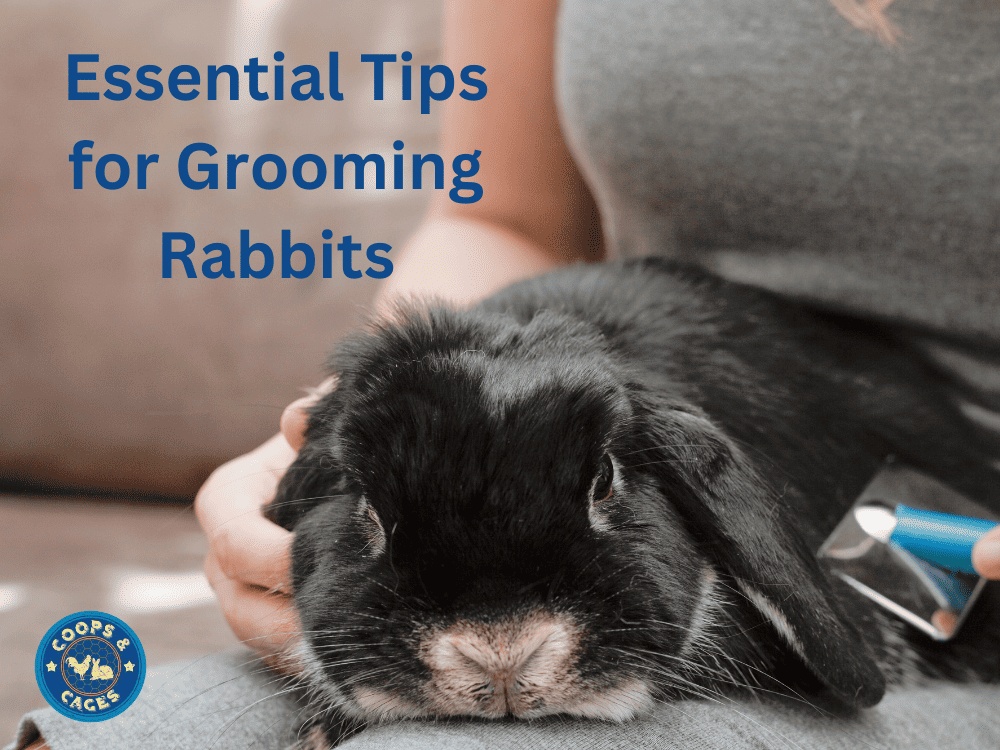FAQ's, How To Do Things, Rabbits
Essential Tips for Grooming Rabbits: A Pet Owner’s Guide
Welcome to the world of grooming rabbits, where we’ll embark on a journey to ensure your fluffy companion’s well-being. From the right tools to coat-specific care, we’ll guide you through essential grooming techniques.
Discover the art of gentle brushing, the importance of nail trimming, and safe handling practices. Plus, we’ll explore the myth of bathing your rabbit.
So, let’s hop into the world of grooming rabbits and keep your furry friend happy and healthy.
Essential Tools for Rabbit Grooming
If you’ve got a bunny at home, then you’ll need to know about grooming. Rabbits are clean animals but they still need our help to keep their fur and nails in top condition.
The Right Brush for Your Rabbit
Depending on your rabbit’s breed, the type of brush needed may vary. For short-haired breeds like the Rex or Dutch rabbits, a rubber brush or glove brush should do just fine.
Long-haired rabbits, such as Angora or Jersey Wooly, will require more specialised tools such as slicker brushes and fine-toothed combs designed specifically for rabbit shedding and detangling matted fur without hurting them.
If you suspect your rabbit has fleas, you may need to invest in a fine flea comb to remove them.
Nail Clippers Designed for Small Animals
A critical part of grooming involves nail care too. You’ll want to get hold of rabbit nail trimmers that can easily trim down those sharp little claws without causing any distress or harm to your pet.
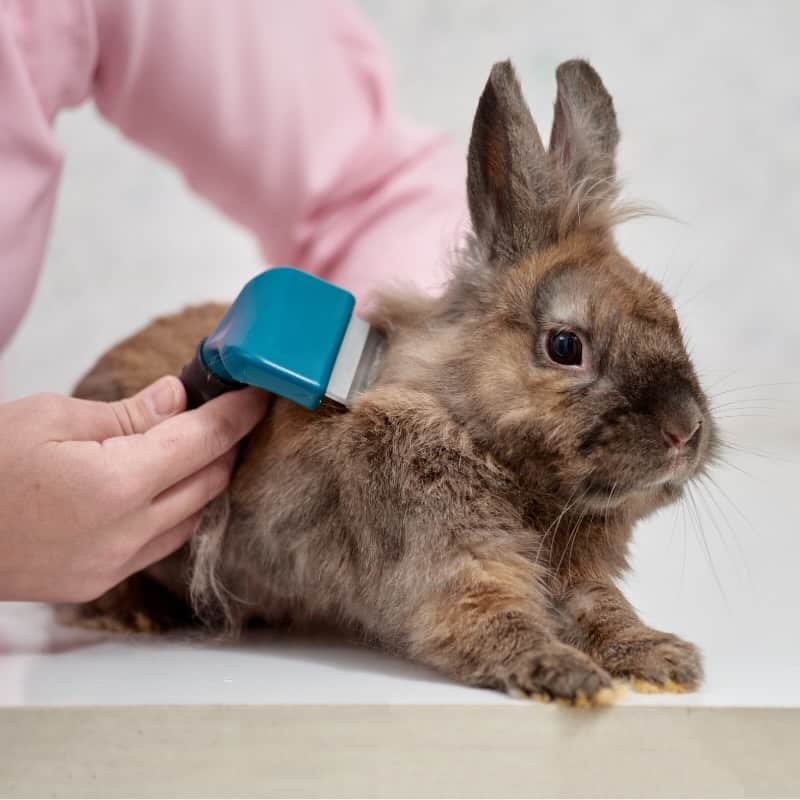
Understanding Your Rabbit’s Coat Type
Rabbit breeds differ not only in looks but also in how they should be cared for when it comes to grooming sessions. Identifying which category your pet falls into will help make sure you’re giving them the best possible care tailored specifically for their fur type.
Rex Rabbits: Velvety and Plush
The Rex rabbit breed boasts a plush, velvety coat that stands upright. This unique trait makes them less prone to matting but more susceptible to cold weather due to lack of undercoat protection.
Angora Rabbits: Fluffy and Long-haired
If you’ve got an Angora bunny at home, then you’re dealing with heavy shedding. They require daily grooming because their hair easily mats or forms knots – especially if they are allowed outdoors where twigs and leaves can get caught in their coats.
Lop Bunnies: Dense and Soft
Lop bunnies, known for their adorable drooping ears, sport dense yet soft fur that requires weekly brushing. While not as high-maintenance as Angoras, Lops still need consistent grooming attention for optimal health.
Use a soft brush and be very gentle when going over your rabbit’s ears. Remember to always brush gently. Regardless of breed or coat length all rabbits have sensitive skin underneath those lovely layers of fluff.
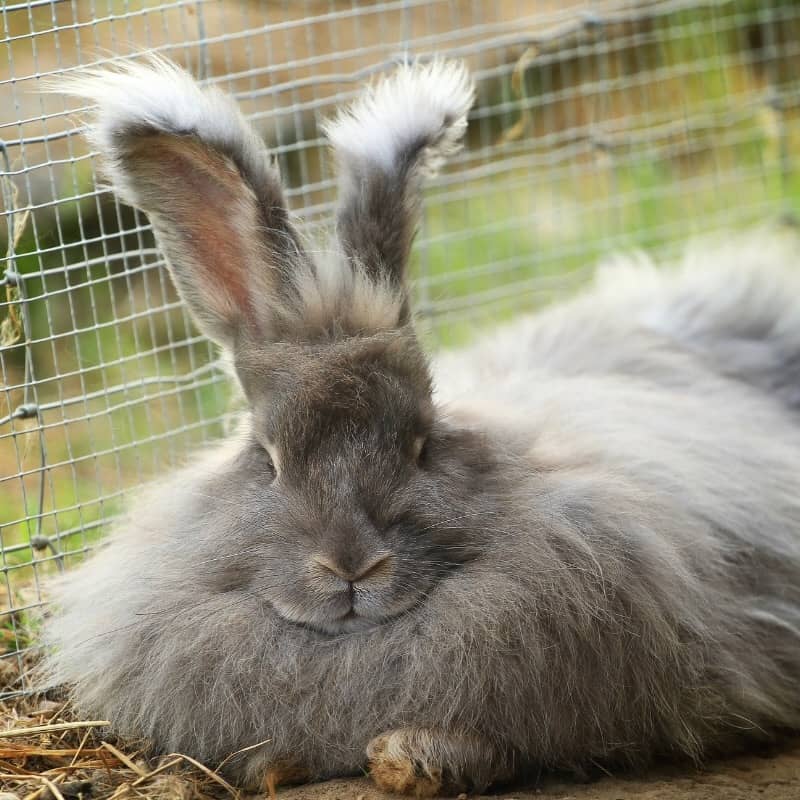
Step-by-Step Guide to Brushing Your Rabbit
Caring for your bunny involves more than just providing food and shelter. Regular grooming, especially brushing sessions, plays a key role in keeping your pet healthy and comfortable.
But how exactly should you go about it? Here’s a step-by-step guide.
Gather the Necessary Tools
First off, you’ll need the right tools: a slicker brush or comb suitable for rabbits will do nicely. These are gentle on their delicate skin but help to remove loose fur.
Make Sure Your Bunny is Comfortable
The next step is getting your rabbit relaxed before starting with any brushing action. This could involve talking softly to them or offering treats – anything that helps keep them calm.
Carefully Start Brushing
To start brushing, gently stroke the tool over your bunny’s body following the direction of the rabbit fur growth – never against it. This reduces discomfort while effectively collecting loose excess fur.
Focusing on Certain Areas
Pet rabbits often have denser fur around their necks and bellies; hence those areas might require extra attention when grooming. Make sure to be gentle as these parts can be quite sensitive.
Short haired rabbits can be brushed weekly while long-haired breeds will need to be brushed daily to avoid their fur becoming a matted mess.
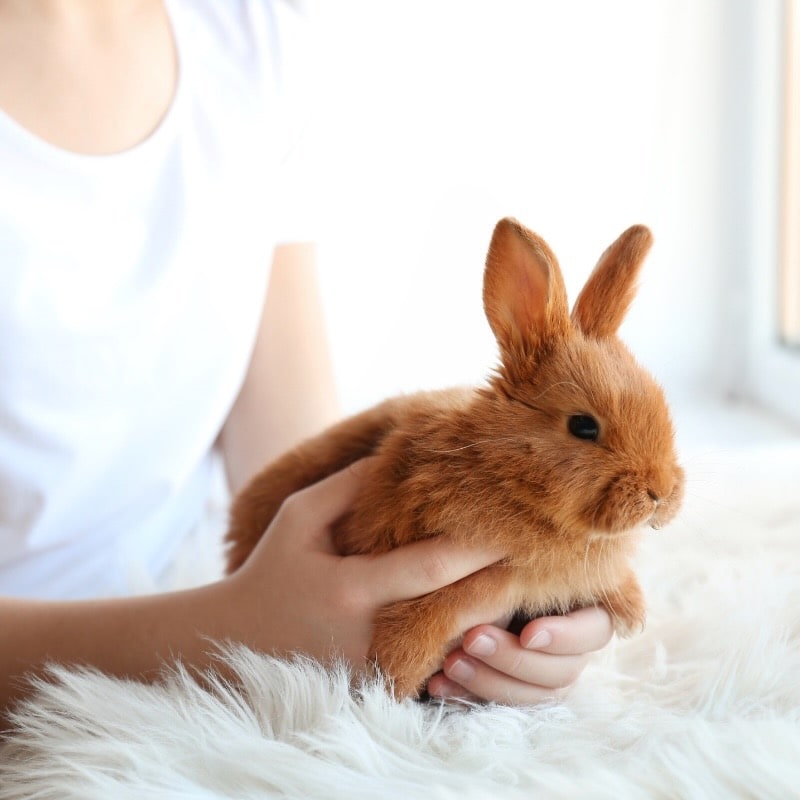
Jordan’s Tip:
Grooming is key to spotting skin and fur problems early. Look out for signs of mites, fleas, ringworm, sore hocks, and dental issues. Consult a vet for any unusual changes
The Importance of Regular Nail Trimming
Regular nail trimming is crucial for your rabbit’s grooming routine. Long nails can cause discomfort and may lead to injuries if they get caught in their enclosure or during playtime.
Nail Clipping Basics: How Often and Why?
Rabbit’s nails grow throughout their lives. You will need to trim nails roughly every 6-8 weeks, though this could differ based on the breed and individual rate of growth.
House rabbits may need their nails trimmed more often as they don’t wear down naturally outdoors.
Keep an eye out for signs that it’s time for a trim – if you notice your pet struggling with movement or seeming uncomfortable when hopping around, their nails might be too long.
Potential Health Issues from Neglected Nails
If left untrimmed for a long time, lengthy claws can curl back into the paw pad causing painful infections which are not only distressing but also costly due to vet bills involved.
In severe cases, neglecting regular nail trims can even lead to posture problems as rabbits adjust their stance to avoid putting pressure on overgrown claws.
Tips For Safe Nail Trimming At Home
Be extra careful when trimming nails at home – clipping too close could hit the quick, which causes bleeding. If you accidentally cut the quick, use styptic powder to stop small amounts of bleeding.
If uncertain about attempting nail trimming yourself, why not ask your rabbit vet to give you a hand when next visiting?
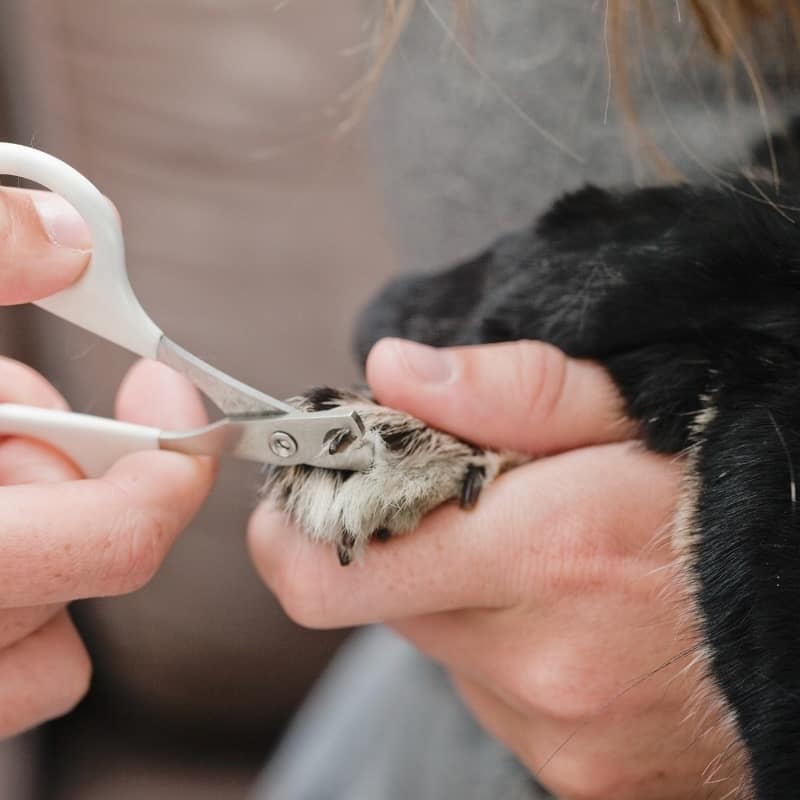
Safely Handling Your Rabbit During Grooming
Handling your rabbit correctly during grooming is crucial to keep both you and your pet relaxed. Here are some useful tips for a stress-free grooming session.
Pick Up with Care
Rabbits have delicate skeletons, so it’s important to pick them up gently but firmly. Support their back legs to prevent any sudden kicking that could cause injury.
Comfortable Positioning
A comfy position can make all the difference. Try placing your rabbit on a non-slip surface or hold them in your lap so they feel secure. This is especially important when you clip nails, as you don’t want your rabbit to move suddenly.
Gentle Brush Strokes
Rabbit skin is sensitive, so always use gentle strokes when brushing their fur. If mats are present, carefully tease them out rather than pulling hard which may hurt your bunny.
Maintain Calmness
Bunnies can sense tension; therefore, keeping calm will help put them at ease too. Speak softly and stroke gently before starting the grooming process.
Remember that patience is key. Rabbits might not be used to being groomed initially but gradually they’ll get comfortable with the process.
Keep sessions short and rewarding to make it a positive experience for your furry friend.
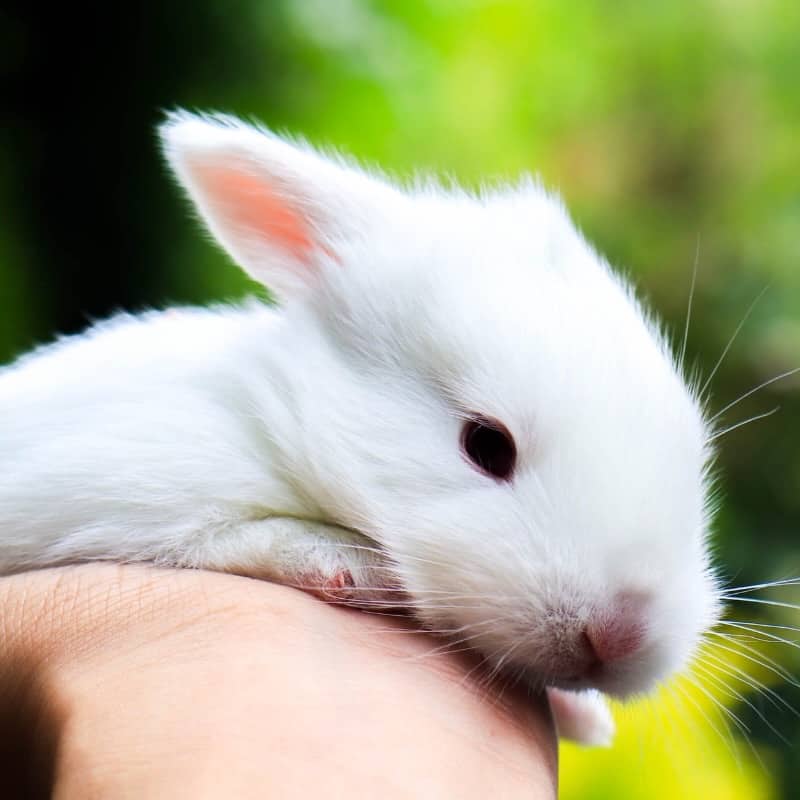
Bathing Your Rabbit
Rabbits do not typically take kindly to water. They can get quite stressed with a traditional bath! But sometimes, your furry mate might need a bit of help cleaning up.
Dry Baths are Best
Rabbits are excellent self-groomers, but occasionally they may need some extra care. If you notice their fur is matted or dirty in places hard for them to reach like the backside area or underbelly spots, consider giving them a dry bath using cornstarch-based rabbit-safe powder instead of water.
Gently sprinkle the powder onto the affected areas and softly brush it out. This will help clean your bunny without causing undue stress.
Avoid Wet Baths Whenever Possible
Unlike dogs that love splashing around in bathtubs, rabbits have sensitive skin which could easily be damaged by wet baths if not dried properly leading to serious health problems such as hypothermia.
If there’s an absolute necessity for a wet wash, gently wipe the rabbit ears and body with a damp cotton ball or wash cloth. Follow this by a gentle towel drying to remove all dampness.
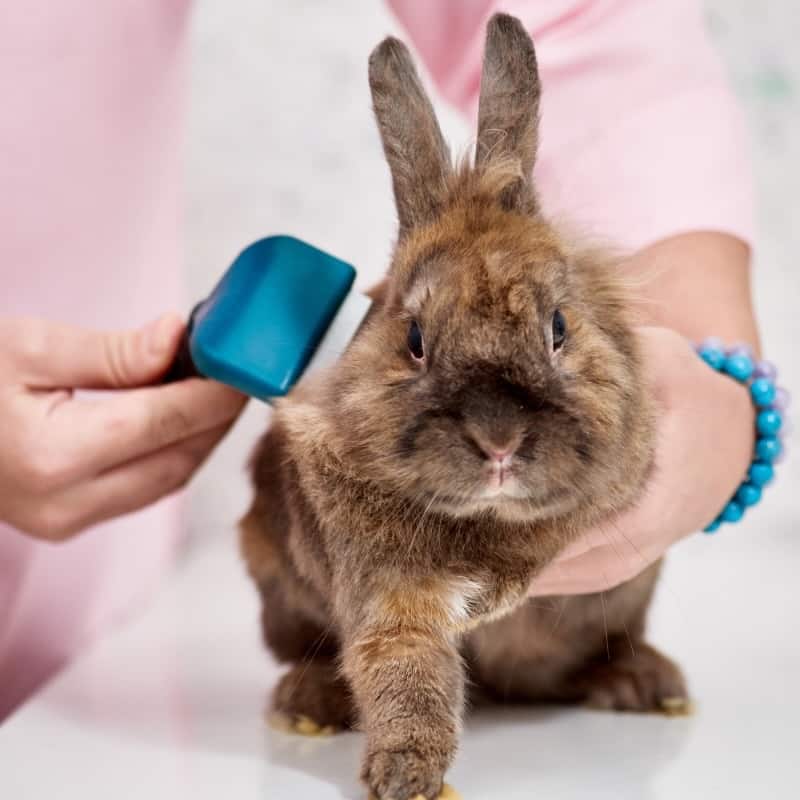
Jordan’s Tip:
Healthy fur starts with a balanced diet. Hydration and limited fat intake are crucial for a shiny coat. Monitor dietary changes as they can signal underlying health issues affecting fur quality.
FAQs in Relation to Grooming Rabbits
Are You Supposed To Groom Rabbits?
Absolutely, grooming your rabbit is crucial for their health and well-being. Brush fur and check rabbit nails weekly.
How Do Rabbits Groom Themselves?
Rabbits are quite tidy creatures. They’ll often lick their fur just like cats do, keeping it neat and clean. But they sometimes need help from humans brushing tangles and trimming nails.
Is It Possible To Over Groom A Rabbit?
Possible but unlikely. Be mindful not to cause discomfort during grooming sessions. If they show signs of stress, give them some space.
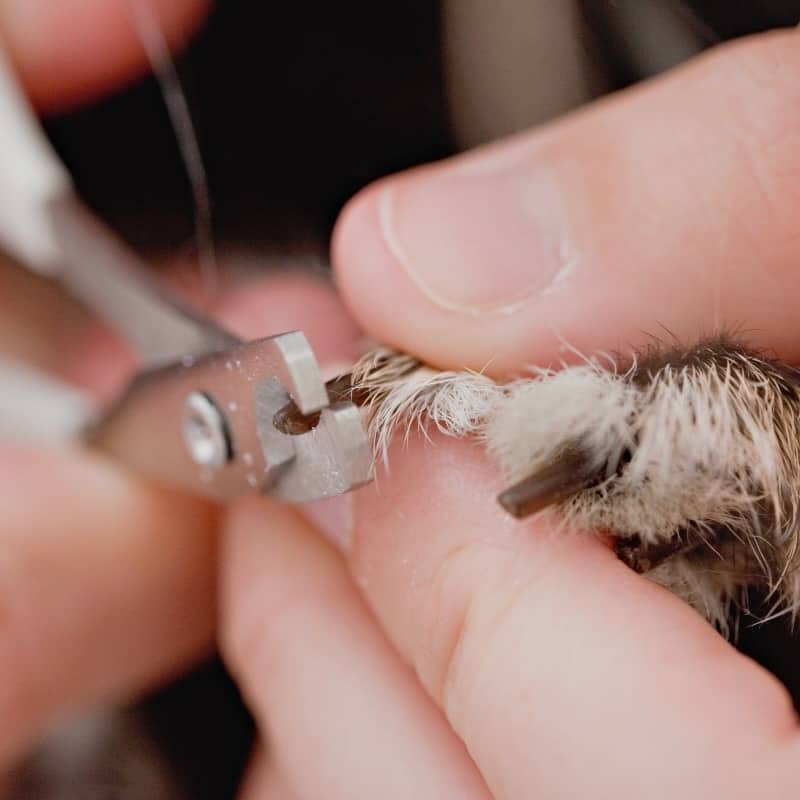
Jordan’s Wrap
Grooming rabbits is essential for their health and comfort. It also keeps them looking tidy! Regular grooming should include gentle brushing, trimming nails and dry baths when necessary. Tailor grooming tools to your rabbit’s specific breed and coat type.
Your rabbit’s comfort should always come first. If you notice signs of stress or discomfort during grooming, it might be time to take a break and let them relax. And always remember, if in doubt about how best to care for your rabbit’s hygiene needs, consult with a professional groomer or vet.
Here at Coops and Cages, we not only sell quality rabbit hutches, but are dedicated to helping you provide the best possible care for your rabbits.
Check out our Rabbit Learning Centre for advice on diet, housing and general rabbit care.



